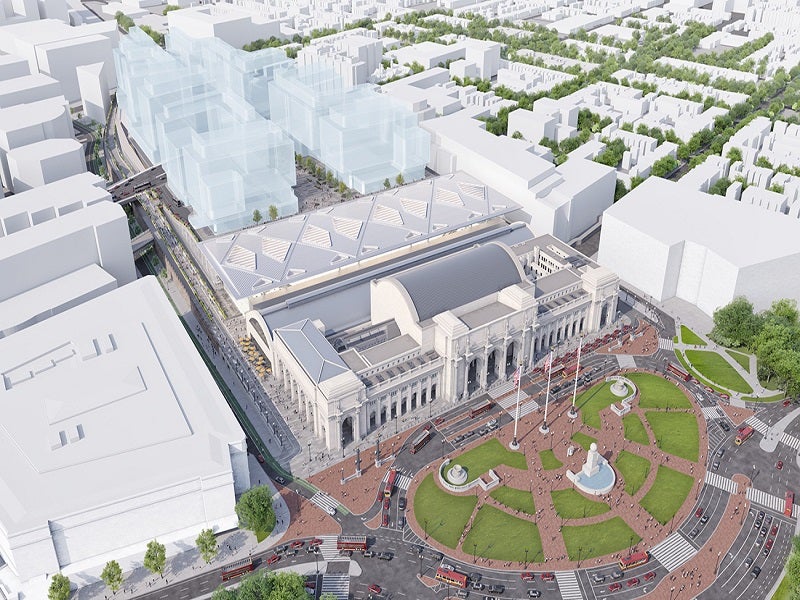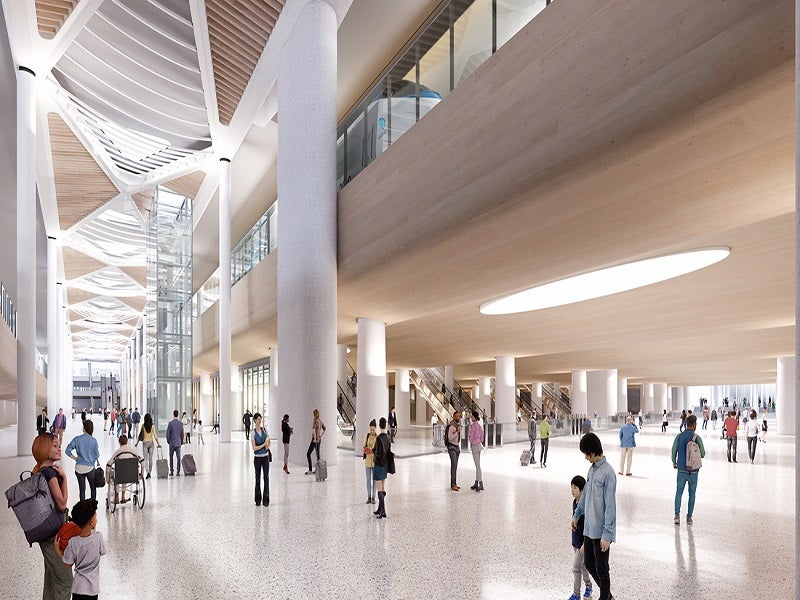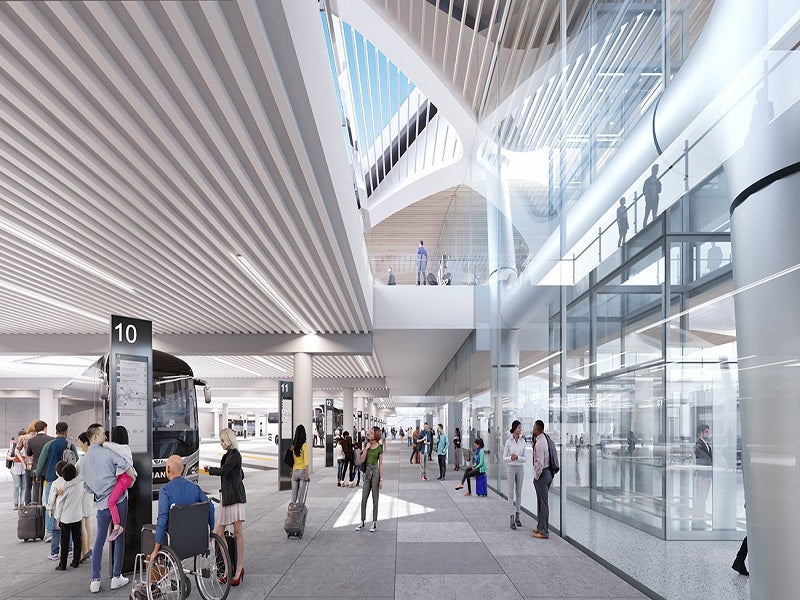The Washington Union Station (WUS) expansion project will modernise and expand the Washington Union Station to create a world-class, multi-modal transit hub and meet the projected demand in 2040.
The project will upgrade critical infrastructure that has not been modernised since the station’s opening in 1907. The multi-modal transportation hub serves 37 million riders a year in Washington DC.
Upon completion, the expansion project will increase the station’s capacity for Amtrak and commuter rail services.
The draft environmental impact statement (DEIS) was released in June 2020. A supplemental DEIS is being prepared to address the potential environmental impact of the project.
The project area is spread across 53 acres and includes the station building, as well as infrastructure such as a parking garage, rail terminal, bus facility, railroad infrastructure, and the H Street Bridge.
Owned by the District Department of Transportation (DDOT), the H Street Bridge crosses the rail terminal to the north of the station building.
The environmental review and approval process for the expansion is expected to be completed by November 2023. Construction is expected to take from 11 to 14 years.
Project stakeholders
The Federal Railroad Administration (FRA) is the lead agency for the project while the Union Station Redevelopment Corporation (USRC) and passenger transportation service provider Amtrak are the project sponsors.
The FRA oversees the National Environmental Policy Act (NEPA) process, including reaching out to stakeholders and the community, as well as the concurrent National Historic Preservation Act Section 106 process.
National Capital Planning Commission (NCPC), the federal government’s planning agency for the national capital region, is responsible for reviewing the site and building plans for the Union Station expansion project.
The Union Station Metrorail Station on the Red Line is operated by the WMATA. Air rights above the rail terminal between K Street and the station building are owned by Akridge. The rights do not cover the H Street Bridge and the railway station parking garage.
Washington Union Station expansion project details
The Union Station expansion plan includes the reconstruction of tracks and platforms to improve the passenger experience. The tracks and platforms are proposed to be lengthened and widened.
The project is expected to add several new lower-level concourses, new entrances at 1st and 2nd streets, new 30ft-wide train platforms, a new bus facility, and a new train hall, as well as new passenger amenities and retail space.
A new train concourse is planned to be created adjacent to the historic station.
The project entails preserving the historic station and providing a new expanded and transformed multi-modal hub for the district adjacent to the historic station. Furthermore, it will improve access to existing rail services, DC streetcars, Metrorail, and bus services.
Improvements will also be made to pick-up/drop off locations, as well as pedestrian and bicycle routes.
The Washington Union Station expansion plan was revised in July 2022 to eliminate the planned above-ground parking garage, facilitating the reconfiguration of the tracks north of Union Station. The parking area is proposed to be relocated from an above-ground deck to underground.
A new rail bridge will be built over the Potomac River and a new pedestrian-bicycle bridge will be built parallel to it.
Project benefits
The Union Station expansion project is expected to enhance rail capacity, reliability, safety, and efficiency of railroad operations at the station.
The project will increase the space for easy movement of passengers and ensure compliance with the Americans with Disabilities Act (ADA). It is expected to generate 67,000 construction jobs over ten years.
Contractors involved
Beyer Blinder Belle Architects & Planners and Grimshaw Architects were engaged to provide the master development plan for Washington Union Station’s 2nd Century Plan in April 2015. The 2nd Century Plan includes multiple projects aimed at doubling train capacity and tripling passenger capacity over the next 20 years.
A team of Grimshaw Architects, Arup, VHB, and Beyer Blinder Belle Architects & Planners unveiled the designs for the expansion of the Washington Union Station in July 2022.
HR&A Advisors, a real estate development advisory services provider, was chosen as the lead economic advisor for the master plan in May 2015. The contractual scope includes providing market and financial analyses, development guidance, and preparing a retail strategy.
KGP design studio, a multi-disciplinary design firm, was selected to provide consultancy services for the concourse revitalisation plan of the station.
Washington Union Station background
Completed in 1908, the Washington Union Station is a multi-modal transportation hub that connects Amtrak intercity trains, Maryland Area Rail Commuter (MARC), Virginia Railway Express (VRE), Washington Area Metropolitan Transit Authority (WMATA) Metrorail, intercity and local bus services, the DC Streetcar, and for-hire vehicles.
It is one of the busiest stations on Amtrak’s Northeast corridor and serves as the primary intermodal transportation hub for the national capital region.




